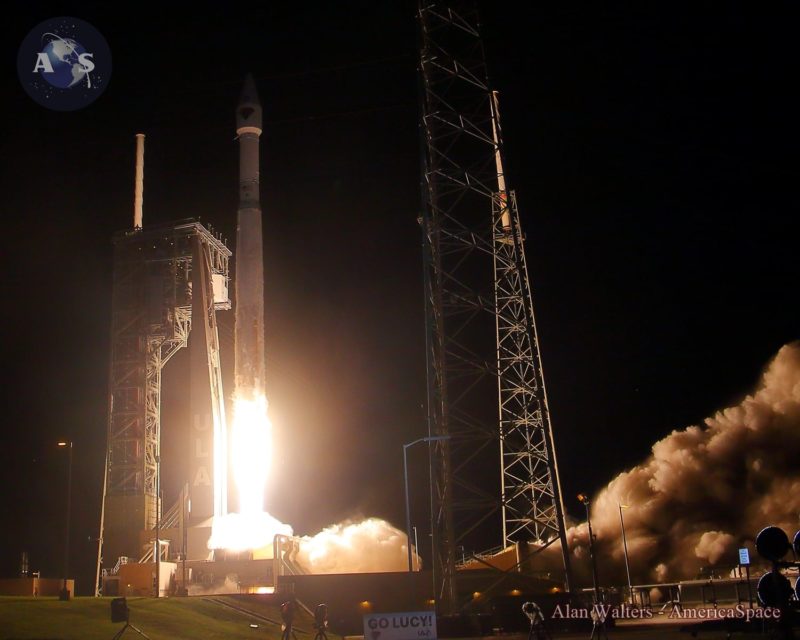
After one of its least-flown years on record, United Launch Alliance (ULA) has successfully executed its fourth mission of 2021 with a rousing, pre-dawn liftoff of NASA’s ambitious Lucy mission to explore multiple Trojan-class asteroids which lead or trail the orbital path of the giant planet Jupiter. A “barebones” Atlas V rocket—flying for the first time in its “401” configuration from the Space Coast in more than four years—rose from storied Space Launch Complex (SLC)-41 at Cape Canaveral Space Force Station, Fla., at 5:34 a.m. EDT Saturday. Launch occurred at the opening instant of a 23-day “window” to reach its Trojan targets.
Following a picture-perfect ascent and dual-burn Centaur profile, Lucy separated from the stack a little less than an hour after launch and is currently in the process of being checked out for a dozen-year voyage that will cover four billion miles (6.4 billion kilometers) and investigate some of the most ancient objects in the Solar System.
Weather conditions were almost perfect for Saturday’s early-morning ascent, with forecasters sticking to a 90-percent-favorable outlook. According to the 45th Weather Squadron at Patrick Space Force Base, high pressures settled over the Space Coast had left in their wake a raft of pleasant weather, mostly clear skies and calm winds, with only a few lingering, low-topped cumulus clouds.
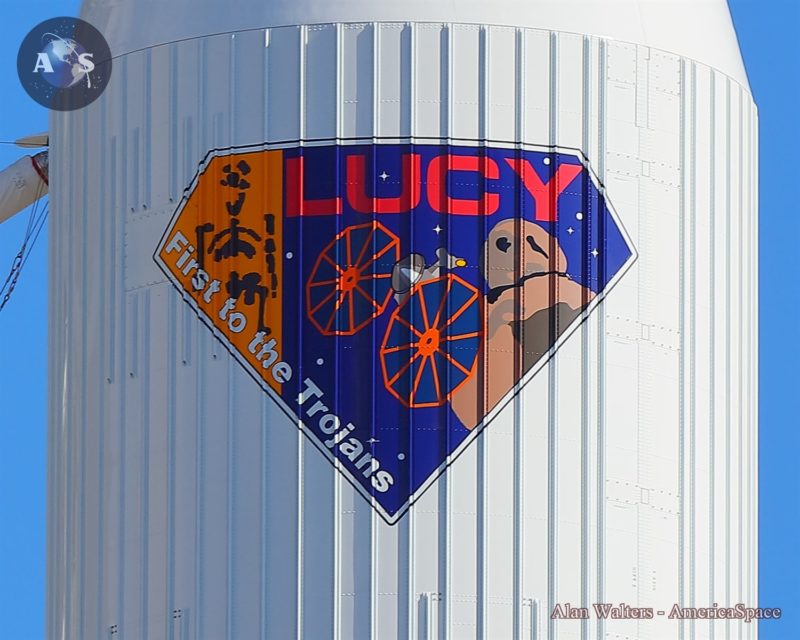
Tonight’s launch, however, comes after a frustrating year for ULA. Hopes to launch at a rate of almost one mission per month in 2021 slipped inexorably through the Centennial, Colo.-headquartered organization’s fingers, with a number of flights already postponed until next year, including the maiden voyage of the new Vulcan-Centaur heavylifter and NASA’s latest Geostationary Operational Environmental Satellite (GOES-T).
Original plans called for a February launch of the Space Test Program (STP)-3 mixed-manifest mission, but cargo readiness issues pushed this back to June, before it fell foul to an indefinite period of delay when anomalous behavior was observed during an Atlas V flight with the fifth geostationary element of the Space-Based Infrared System (SBIRS GEO-5) in May.
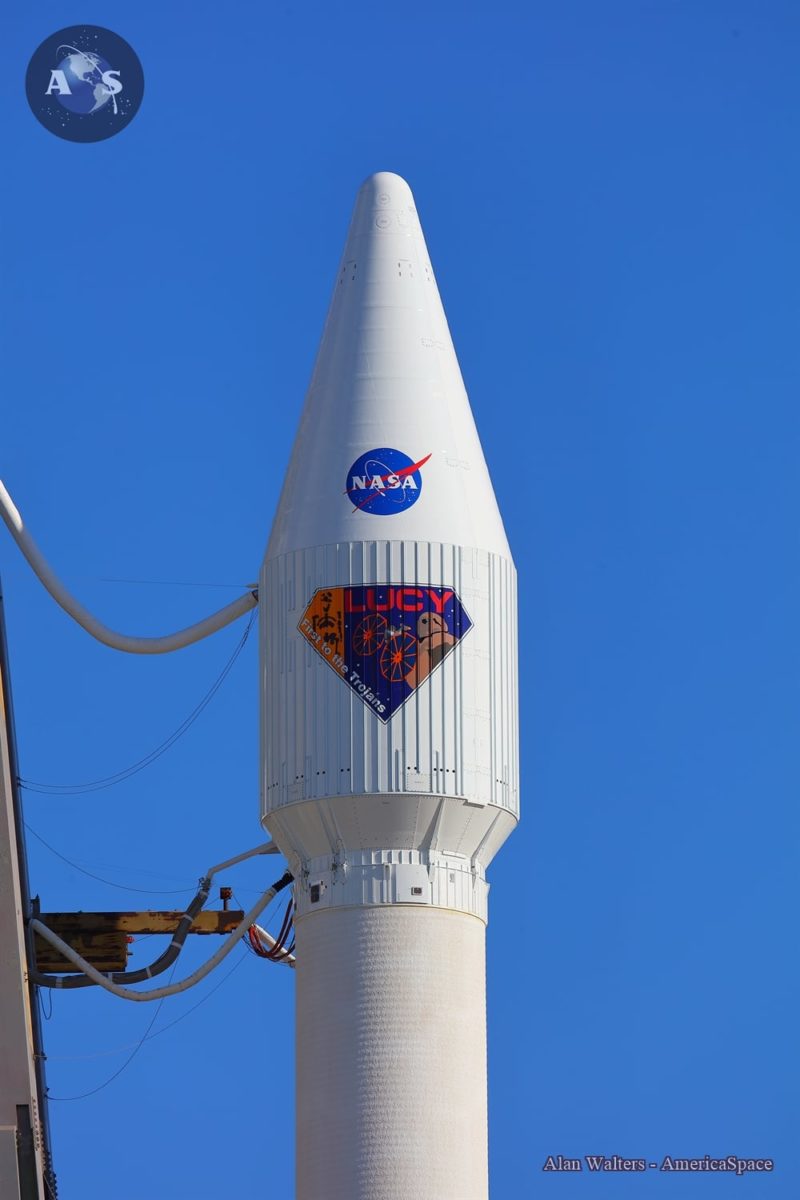
Added to these woes, the long-awaited second Orbital Flight Test (OFT-2) of Boeing’s CST-100 Starliner to the International Space Station (ISS), first targeted for late March, was postponed until the end of July, before a propulsion valve issue on the spacecraft produced its own indefinite delay.
According to NASA, OFT-2 will not now fly until the first half of 2022. As such, ULA has flown just four times this year: the highly secretive NROL-82 for the National Reconnaissance Office in April and Landsat-9 at the end of September, both out of Vandenberg Space Force Base, Calif., as well as SBIRS GEO-5 and today’s Lucy, both from Cape Canaveral Space Force Station, Fla.
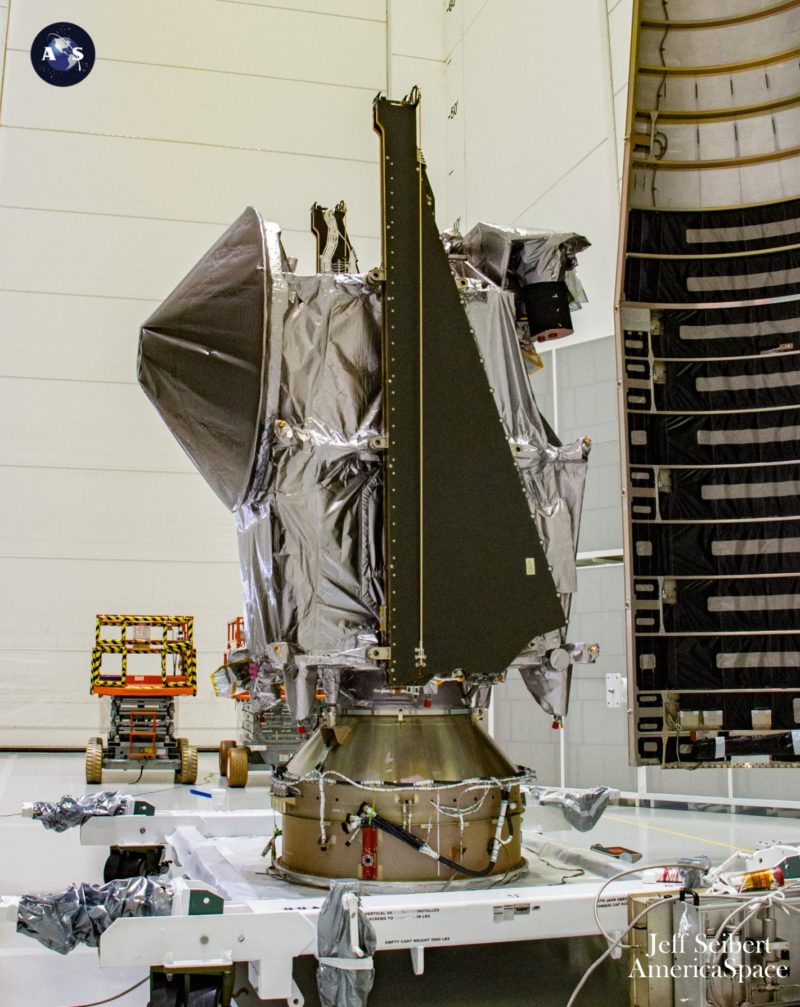
As outlined yesterday by AmericaSpace, Lucy’s own Atlas V came from an unexpected source, for it turned out to be the same booster as should have lifted OFT-2 to orbit in August. Within days of being stood down from that mission, ULA CEO Tory Bruno revealed that the Common Core Booster (CCB)—the Atlas’ 107-foot-long (32.5-meter) first stage—would be retasked with launching Lucy, which would allow it to remain in the Vertical Integration Facility (VIF) at SLC-41.
The Centaur upper stage was added to the stack in mid-September and the combo was put through a fully-fueled Wet Dress Rehearsal (WDR) on 1 October. Early last week, the Large Payload Fairing (LPF), bearing Lucy, was mounted atop the rocket. The Atlas V configuration selected to launch Lucy was the “401”, numerically named to identify a 14-foot-diameter (4-meter) fairing, no strap-on boosters and a single-engine Centaur. Inclusive of today’s launch, this workhorse of the fleet has now flown 40 of the 89 Atlas V missions since August 2002.
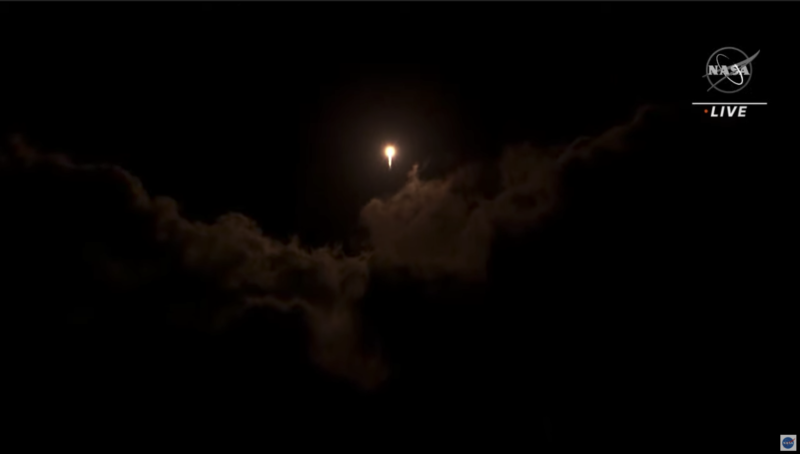
The 401’s customers have run the gamut across commercial, scientific and military spheres, including three Mars-bound missions, the Solar Dynamics Observatory (SDO), the Lunar Reconnaissance Orbiter (LRO) and the Van Allen Probes. Rarely used of late, the 401 previously saw service to lift NASA’s InSight mission to the Red Planet from Vandenberg in May 2018 and before today’s launch of Lucy it last flew from the Space Coast way back in August 2017.
Lucy also marked the 100th launch from SLC-41, a pad which originated as Launch Complex (LC)-41 in the heyday of the “Space Race”, back in the early 1960s. It formed an integral part of the “Integrate-Transfer-Launch” (ITL) facility for the U.S. Air Force’s Titan rocket family. Its first launch occurred on 21 December 1965, in the form of a three-stage Titan IIIC. Although the booster suffered a partial failure of its upper stage, which left several payloads stranded, the launch opened the floodgates for a remarkable career.
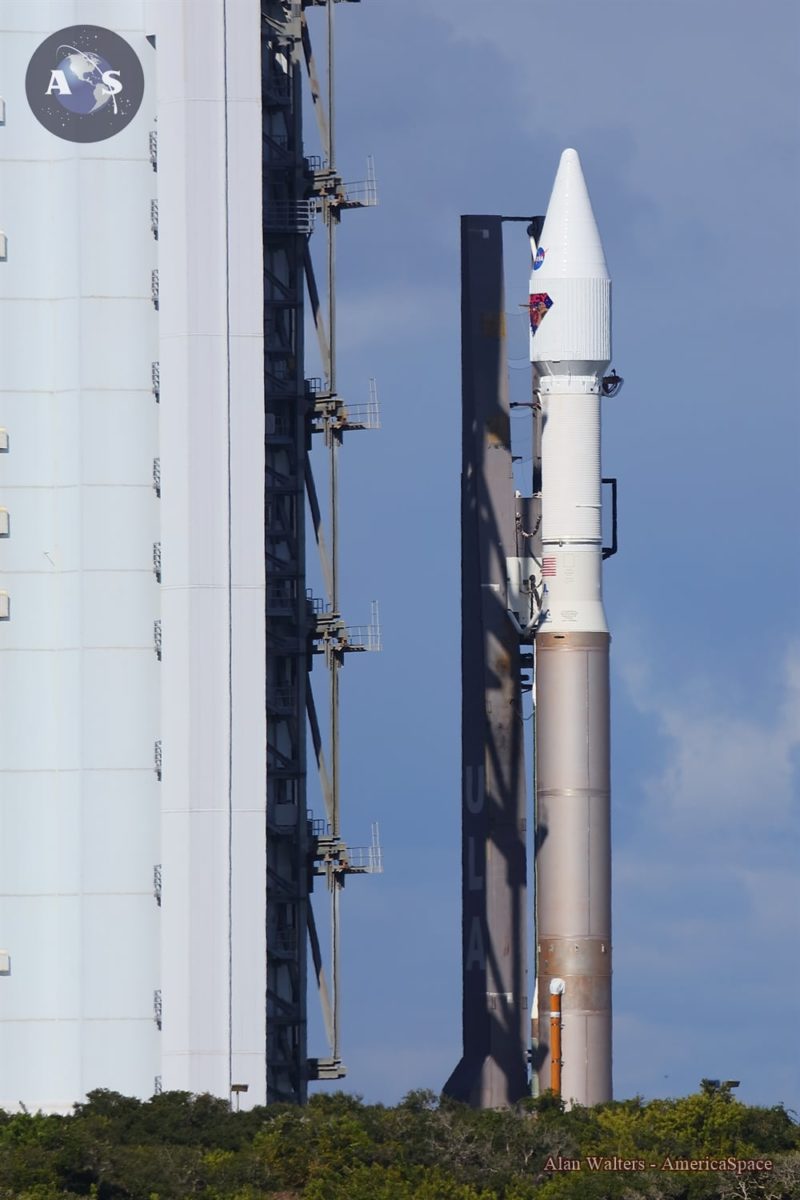
By May 1969, ten Titan IIIC missions had flown—eight of them with full and unfettered success—and in February 1974 SLC-41 transitioned to the uprated Titan IIIE-Centaur, which failed dismally on its first flight when a liquid oxygen pump malfunctioned in the rocket’s second stage. This proved somewhat problematic for NASA, which intended to utilize the Titan IIIE for four major deep-space missions: the Viking orbiters and landers to Mars and the twin Voyagers to explore the outer Solar System and beyond.
Fortunately, the Titan IIIE’s next six missions proved charmed. By the time it flew its seventh and last launch from SLC-41 in September 1977, the booster had safely delivered both Vikings, both Voyagers and a pair of Helios solar science probes, developed jointly between the United States and what was then West Germany. The pad was then decommissioned for almost a decade, before undergoing an extensive series of upgrades from 1986 to accommodate the Titan IV. This booster flew ten times between June 1989 and its final launch in April 1999, transporting satellites into orbit for early-warning, naval reconnaissance, signals and electronic intelligence.
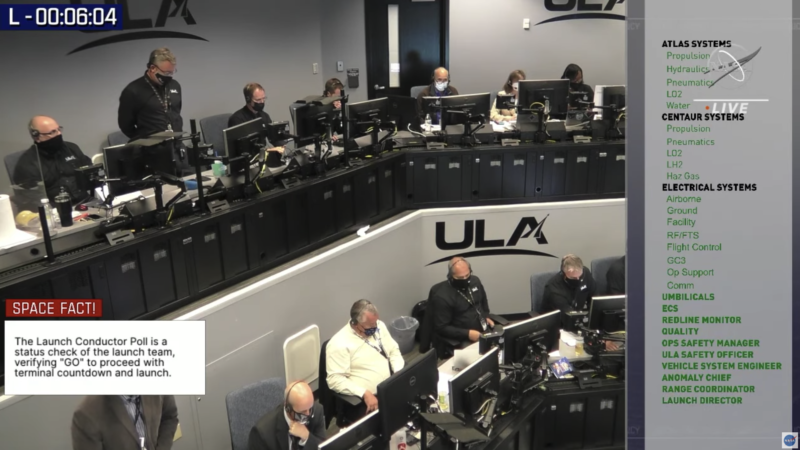
SLC-41’s most recent upgrade came at the turn of the millennium, when it again underwent modification to handle the Atlas V. And between August 2002 and this morning’s launch of Lucy, it has supported no fewer than 73 Atlas V flights. Its clients have run the gamut from military, scientific and civilian payloads, including the Mars Reconnaissance Orbiter (MRO), the Pluto-bound New Horizons, the Juno mission to Jupiter and both the Curiosity and Perseverance rovers to the Red Planet.
For this morning’s 100th SLC-41 launch, the countdown commenced seven hours ahead of T-0, when the 188-foot-tall (57.3-meter) Atlas V was powered-up, as ULA teams worked to test its avionics and guidance systems. The booster’s first stage had already been filled with storable rocket-grade kerosene, known as “RP-1”, before the WDR, and a sizable chunk of today’s countdown required the loading of 48,800 gallons (221,850 liters) of liquid oxygen, together with an added 4,150 gallons (18,865 liters) of liquid oxygen and 12,300 gallons (55,900 liters) of liquid hydrogen for the Centaur upper stage.
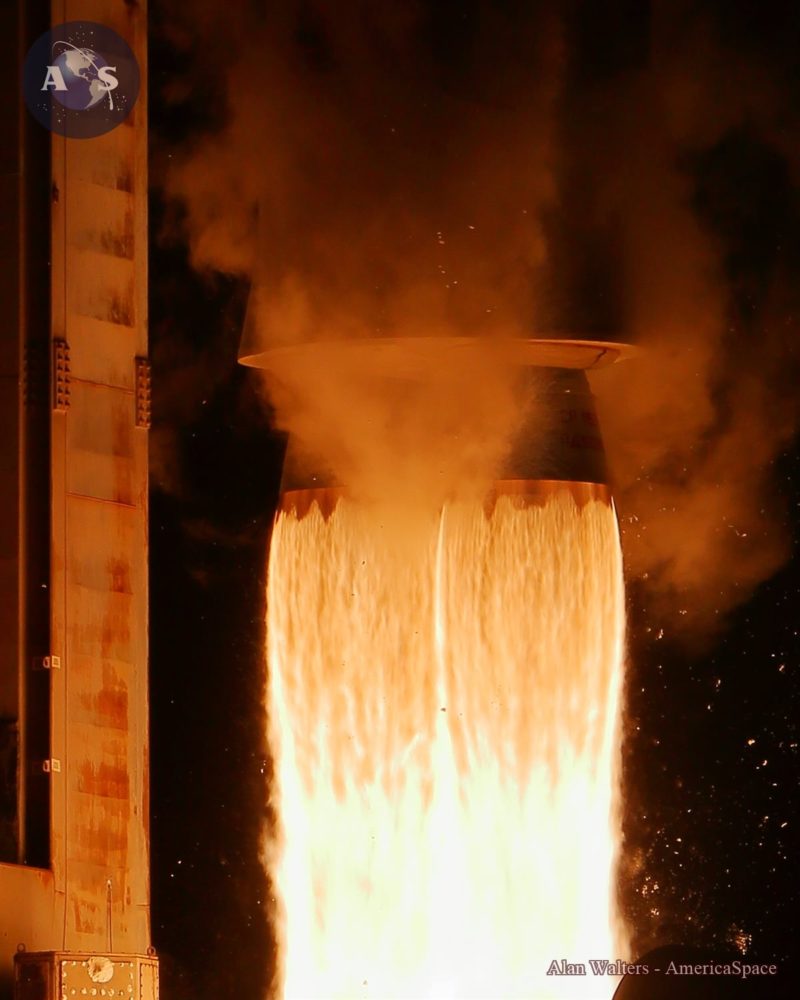
Beneath favorable skies, and with an exceptionally well-behaved vehicle, the outlook for a successful, on-time launch seemed promising. “Winds remain light at 6 knots,” tweeted ULA CEO Tory Bruno. “Pgo [Probability of Go] at 90% for cumulus clouds. Feels like a good day to set out for the Jovian Trojans.”
As the countdown entered its final hour before launch, the loading of these cryogens concluded and entered “topping”, a phase of necessary replenishment as the super-chilled propellants naturally boiled away. Meanwhile, the weather remained optimum, hovering around 90-percent-favorable, with only light cumulus clouds overhead. At 5:30 a.m. EDT, after the final built-in hold at T-4 minutes, the clock resuming counting.
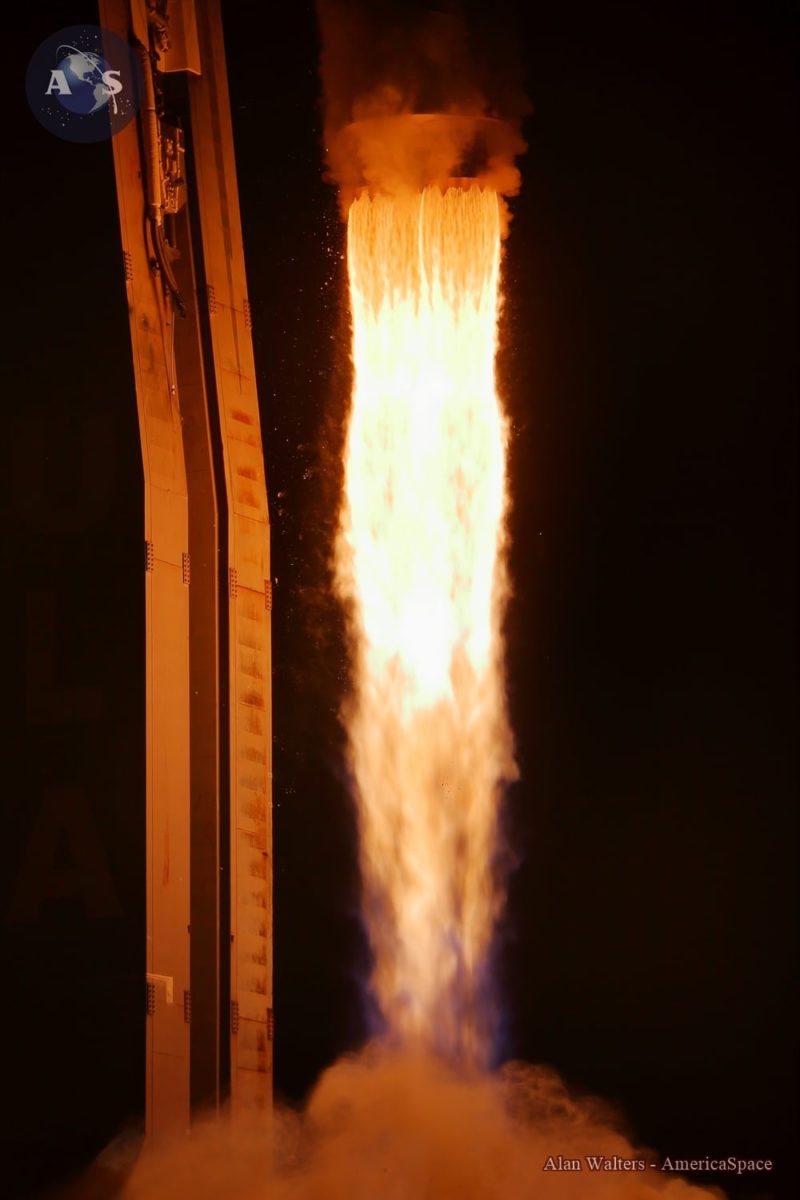
The Atlas V’s Russian-heritage RD-180 engine roared to life at T-2.7 seconds, ramping up to 860,000 pounds (390,000 kilograms) of thrust at the instant of liftoff. The stack headed smoothly uphill into the pre-dawn darkness, passing Mach 1 at 80 seconds into flight and experiencing “Max Q”—a period of peak aerodynamic turbulence on its airframe—a few second thereafter. The RD-180 burned hot and hard for a little over four minutes, before shutting down on time and the first stage separated. By this point, the stack weighed barely eight percent of what it did at liftoff.
This set up the proper conditions for a dual-burn Centaur profile. The upper stage’s powerful RL10C-1 engine came alive with 22,900 pounds (10,390 kilograms) of thrust for a pair of burns, lasting nine and six minutes, respectively. The first burn served to inject Lucy into an Earth-parking orbit, whilst the second placed the spacecraft onto an Earth Escape trajectory to intercept its Trojan targets.
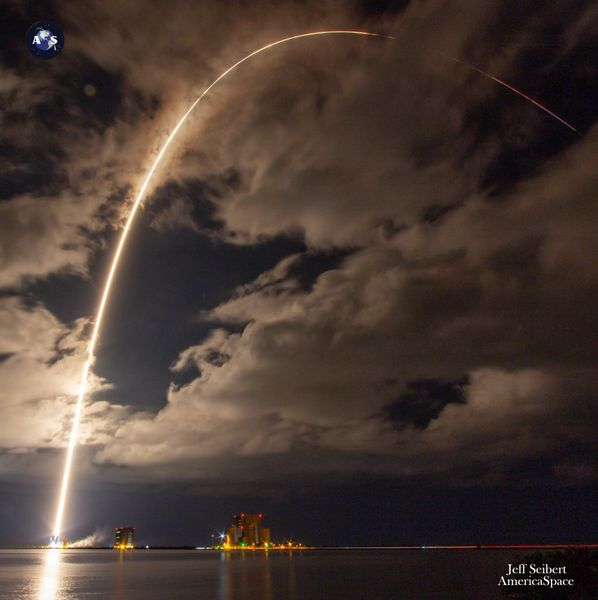
Between these two burns, the 39-foot-tall (12-meter) Large Payload Fairing (LPF) was discarded, exposing Lucy to the harsh space environment for the first time. The spacecraft separated from the Centaur at 58 minutes and 5 seconds into the flight and its fan-like solar arrays were swung open and latched into place shortly thereafter.
Lucy’s name honors the famous Australopithecus afarensis hominin skeleton found in Ethiopia in 1974, which is today recognized as one of humanity’s earliest forebears. Fittingly, the robotic Lucy will visit several worlds in the outer Solar System which are themselves “fossils” from the early Solar System.
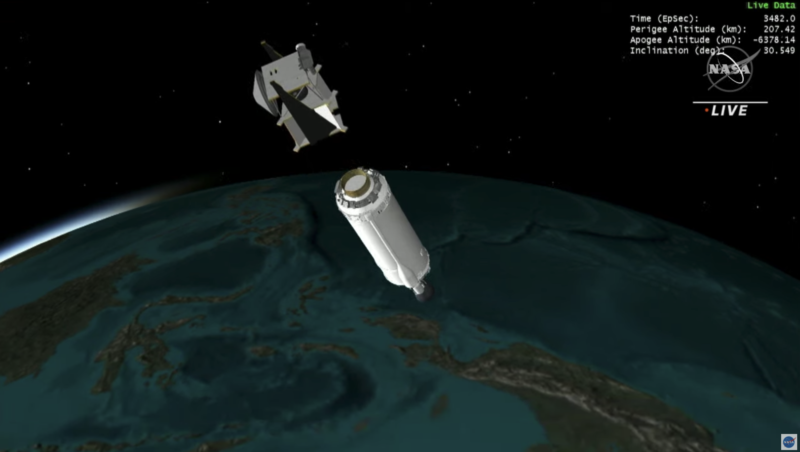
These so-called Trojan asteroids typically occupy stable orbits “ahead” or “behind” a large planetary body at the gravitationally-balanced L4 or L5 Lagrange Points. And although thousands of Trojans are currently cataloged, and have been detected in the vicinities of Mars, Neptune and even Earth itself, the vast multitude are associated with Jupiter.
These ancient objects drew their naming convention from characters on the opposing Greek and Trojan camps in the classical tale of Troy. The “Greek Camp” typically resides at the L4 Point, ahead of Jupiter, with a “Trojan Camp” at L5, trailing the giant planet. However, one of Lucy’s targets—617 Patroclus, which honors Achilles’ Greek companion—is an exception to this rule, having been assigned to the Trojan Camp before the naming convention came into effect. It is believed that millions of Jovian Trojans exist, perhaps equivalent to the amount of small bodies in the classical “asteroid belt” between the orbits of Mars and Jupiter.
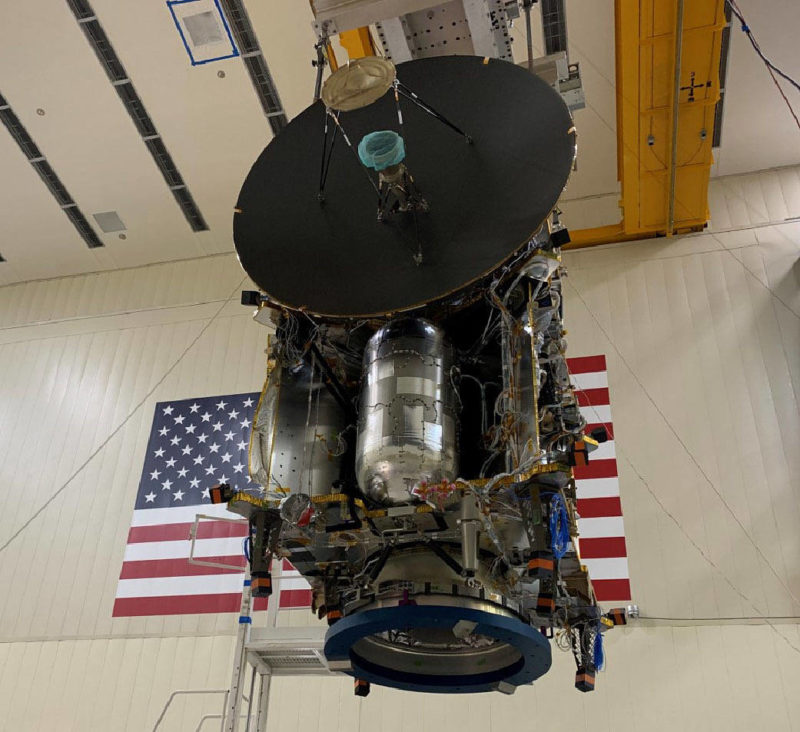
Gravitationally trapped for billions of years, caught betwixt the competitive tug of the Sun and Jupiter, these primordial bodies represent leftovers of the building-blocks from the giant planets and Lucy’s mission is expected to reveal fundamental clues about their origins.
“This is a unique opportunity,” said Lucy Principal Investigator Dr. Harold Levison of Southwest Research Institute (SwRI) in Boulder, Colo. “Because the Trojans are remnants of the primordial material that formed the outer planets, they hold vital clues to deciphering the history of the Solar System. Lucy, like the human fossil for which it is named, will revolutionize the understanding of our origins.”
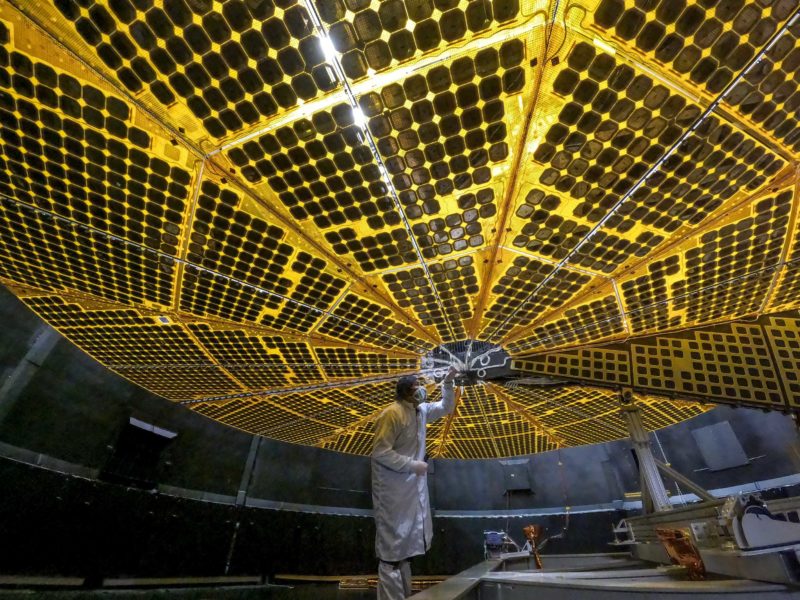
Its trajectory over the coming years will see it conduct a pair of Earth Gravity Assist maneuvers in October 2022 and December 2024, before it tests its mettle by surveying the “main belt” asteroid 52246 Donaldjohanson in April 2025. This particular asteroid lies some 220 million miles (350 million kilometers) from the Sun and measures only about 2.5 miles (4 kilometers) in diameter.
Named for the palaeontologist Dr. Donald Johanson, who found the skeletal Lucy, it is a relatively common, C-type or “carbonaceous” asteroid. Lucy will pass it at a distance of 570 miles (920 kilometers) and test its capabilities before its first encounter with a true Trojan.
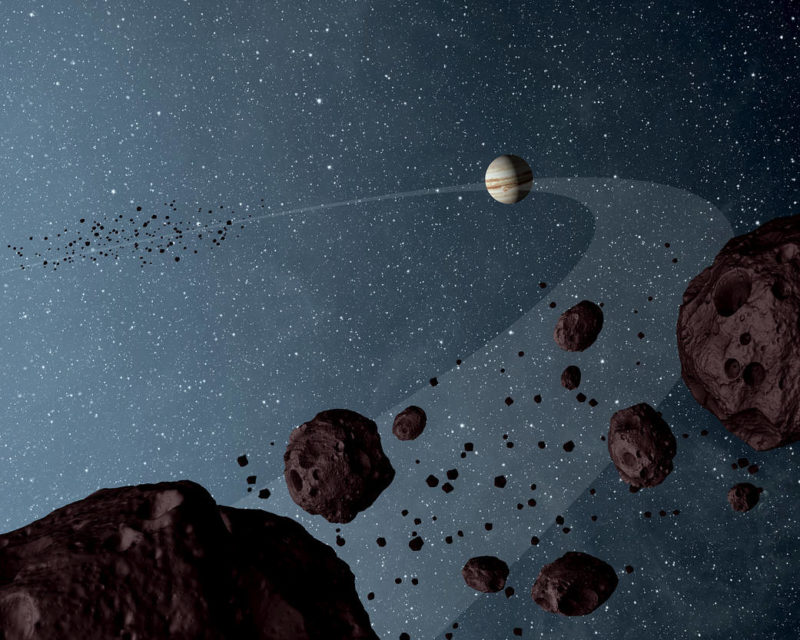
First up are four members of the Trojan Camp, led by 3548 Eurybates, which measures about 42 miles (68 km) across and in January 2020 was verified by the Hubble Space Telescope (HST) to possess its own natural satellite, now named Queta. Six thousand times fainter than Eurybates—implying a diameter no greater than a half-mile (1 kilometer)—Queta promises to be one of the tiniest objects ever visited by a spacecraft.
Five weeks after its August 2027 Eurybates-Queta encounter, Lucy will sweep just 260 miles (420 kilometers) past the tiny, reddish-hued 5094 Polymele, before heading to survey the mid-sized, slow-rotating 1351 Leucus in April 2028 and the exceptionally dark 21900 Orus the following November.
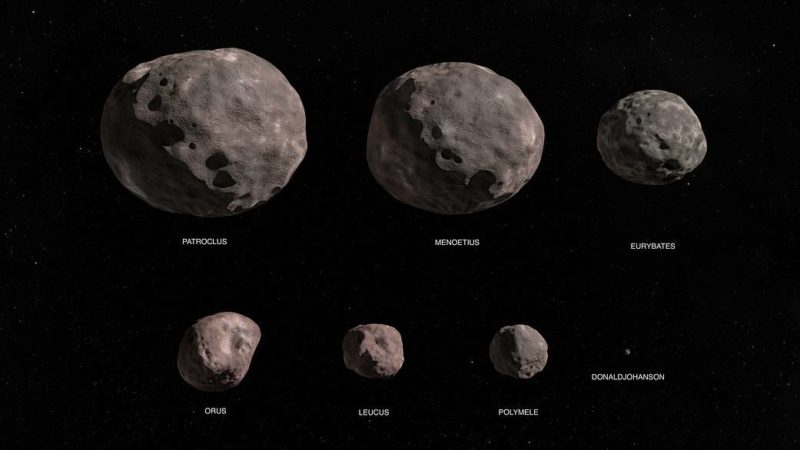
With the completion of these four Trojan visits, the spacecraft’s trajectory will carry it back toward the inner Solar System for its third Earth Gravity Assist in December 2030 to propel it toward its final planned targets. This is the “binary” Trojan 617 Patroclus, in the Greek Camp, which it will encounter in March 2033. Measuring about 70 miles (110 km) across, it has a companion, Menoetius, which is only 10 percent smaller than Patroclus. The two objects reside about 420 miles (680 km) apart.
Lucy will conduct imaging of each of its asteroidal quarries, searching for traces of silicates, ices and carbonates and measuring their thermal spectral signatures and masses. And getting to each of them has proven to be a marvel of trajectory planning.
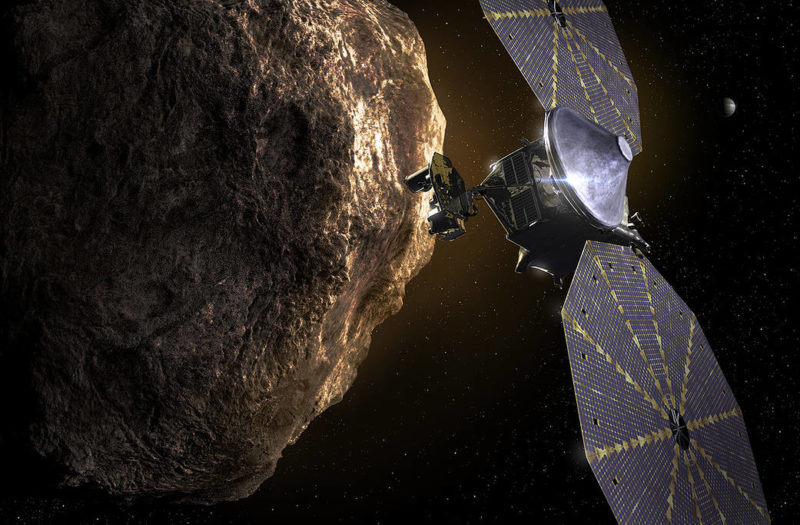
“There are two ways to navigate a mission like Lucy,” said optimization technical lead Jacob Englander. “You can either burn an enormous amount of propellant and zigzag your way around, trying to find more targets, or you can look for an opportunity where they just all happen to line up perfectly. As such, Lucy’s high-speed lane-changes will be effected through gravity-assisted boosts, with minimal fuel usage.
And although Lucy’s closest approaches to its primary targets—Donaldjohanson, Eurybates/Queta, Polymele, Leucus, Orus and Patroclus/Menoetius —are expected to be over in a matter of hours, the spacecraft itself will occupy an orbit that will likely remain stable for 600,000 years. Just like its prehistoric ancestor, who trod the plains of Ethiopia three million years ago, so her robotic descendent will wander the outer Solar System until perhaps someday another human gets to see her again.




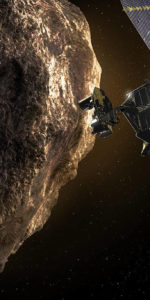
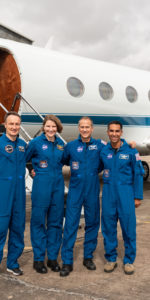
3 Comments
3 Pings & Trackbacks
Pingback:Lucy Launches, Begins Multi-Billion-Mile Trek to Explore Dawn of the Solar System
Pingback:Mighty Atlas V Closes Out 2021, Delivers STP-3 Directly to GTO – AmericaSpace
Pingback:Mighty Atlas Launches, Begins Banner Year for ULA – AmericaSpace